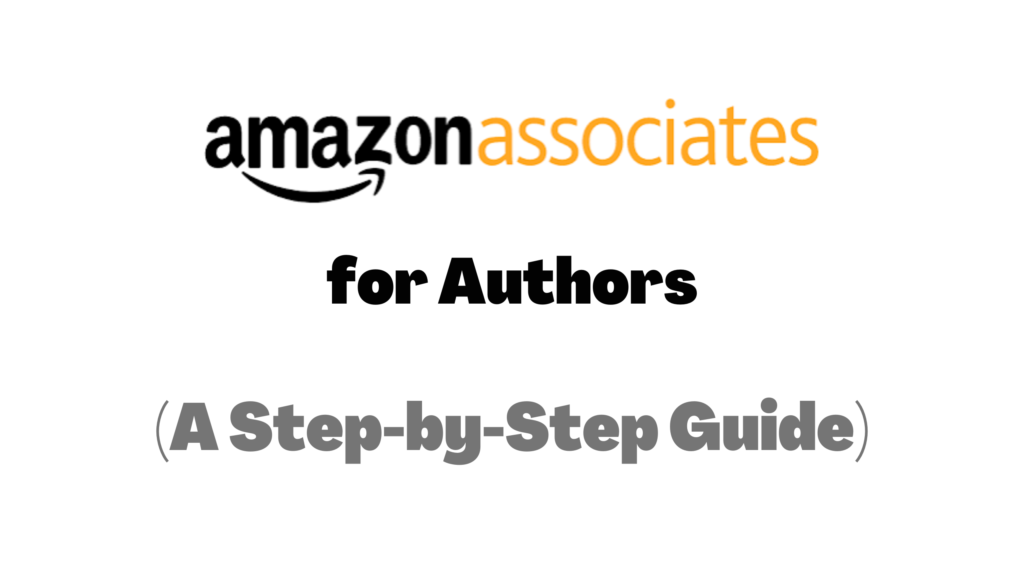
Here’s a step-by-step guide that shows you how to create Amazon affiliate links for your own books. This will help you make more money from extra commissions, as well as track where some of your book sales are coming from.
Quick disclaimer: The Amazon Associates Program has strict policies about using affiliate links that you should adhere to, and those policies change over time. So please make sure you refer to the latest information listed on their website before you proceed.
What’s the Amazon Associates Program?
The Amazon Associates Program is Amazon’s official affiliate marketing program that helps content creators monetize their audience via Amazon’s products.
So if you’re a digital creator (regardless of whether you have any of your own products listed on Amazon for sale), Amazon gives you tools that help you create special links to products that you can promote on your website or social media accounts.
If someone buys anything using those special links, then you get a commission.
So basically, it’s an affiliate program that helps you make money by promoting other people’s or company’s products.
Why Use Amazon Affiliate Links for Your Own Books?
The great thing about the affiliate program is that you can use affiliate links to send people to your own products. So you can create special links for each book, and if someone buys a book using those links, you’ll gain a couple of advantages.
- More Revenue: First, you’ll make more money because you’ll get a percentage cut of the sale as an affiliate (in addition to the royalties). Moreover, if someone clicks on your book’s affiliate link, and decides to buy something else within 24 hours on Amazon (for example, a laptop), then you’ll get the commission for that as well.
- Sales Tracking: Second, you’ll be able to track where some of your sales are coming from. Given that Amazon does not share traffic source data with authors, using affiliate links for your books will help you analyze and optimize some of your marketing channels. For example, you can analyze how your launch plan is going and then double down on a channel that is converting better.
So to me, it’s a no-brainer to use affiliate links for all my books, and I’ve been using them for years.
How Much Money Can You Make from Amazon Affiliate Links to Your Books?
Depending on what you’re selling, you can get paid either a flat fee called a Bounty Rate (up to $25), or a percentage of each sale as commission income (up to 20%). Amazon lists all their bounty rates and standard commission income rates here.
For authors, here’s a short list of how much you can make, depending on what format someone buys.
- Kindle ebook*: 4.00%
- Physical book: 4.50%
- Audible audiobook: $0.50
*Note that for Kindle ebooks, Amazon has recently removed that category as an eligible listing from their published commission rate table. I have no idea if that means that they stopped giving out commissions for ebooks completely, or whether they have it listed somewhere else, but I can verify that as of this writing, I still do get Kindle ebook commissions.
How to Create Amazon Affiliate Links for Your Books (Step-by-Step)
Here’s a step-by-step guide that explains how to get started
Step 1: Sign up to the Amazon Associates Program
First, you’ll need to sign up for the affiliate program.
This is a short application process and Amazon will review your application and approve it if you meet their qualifying criteria (e.g., you must have an active website or at least 500 followers on certain social media networks).
Click here to sign up to the Amazon Associates affiliate marketing program.
Step 2: Create a tracking code
After you sign up, the next step is to create a tracking code. This helps you track where clicks are coming from when you run your reports later.
You can create multiple tracking codes, and my best practice is to create a code that makes it simple to tell me where the source is coming from.
For example, I use the following codes for different traffic sources
- writerside-20 : for book links included on this blog (Writer on the Side)
- couchmngr-20 : for book links included on my other blog (The Couch Manager)
- twtrgnrl-20 : for book links included on my Twitter posts
- mybooksldpg-20: for book links included on my book landing page
Note that there’s a “-20” at the end of each tracking code. This is a location-specific tag that is appended automatically by Amazon and you cannot change it. 20 is the code for North America. If you live in another region, you’ll see a different number.
To create a new tracking code, simply click on your account name in the top right of your Amazon Associates dashboard, then click on “Manage Your Tracking IDs”
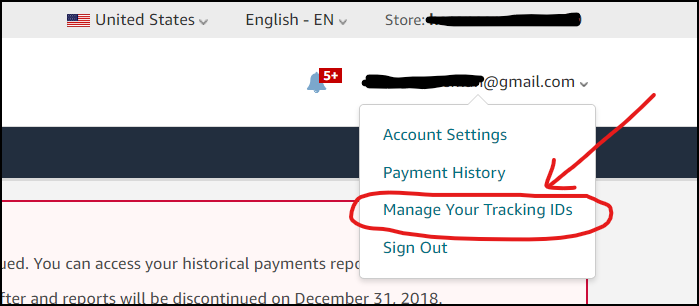
Then click on “Add Tracking ID” and type out the code you want.
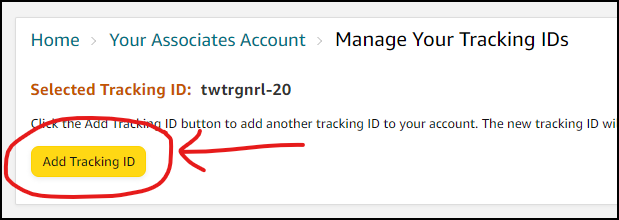
Step 3: Turn on the SiteStripe tool
The Amazon Associates SiteStripe feature is a little tool that shows up on top of your Amazon page and allows you to create affiliate links directly from within it.
Here’s how it looks like
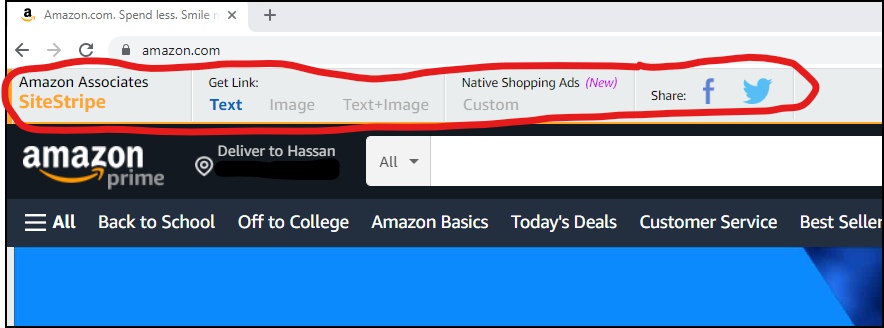
To turn it on, you simply need to enable it from within your Amazon Associates account (click here for more information about SiteStripe)
Step 4: Visit your book’s Amazon page and create a text-based affiliate link
Next, head over to your book’s Amazon page, and select the format of your book that you’d like to direct visitors to (i.e., Kindle, Paperback, Hardcover, or Audiobook).
Then click on “Text” on the SiteStripe tool, select the Tracking ID you want to use, choose “Short Link” or “Full Link,” and click on “Get Link.”
Here’s a screenshot of how that looks like for one of my books.
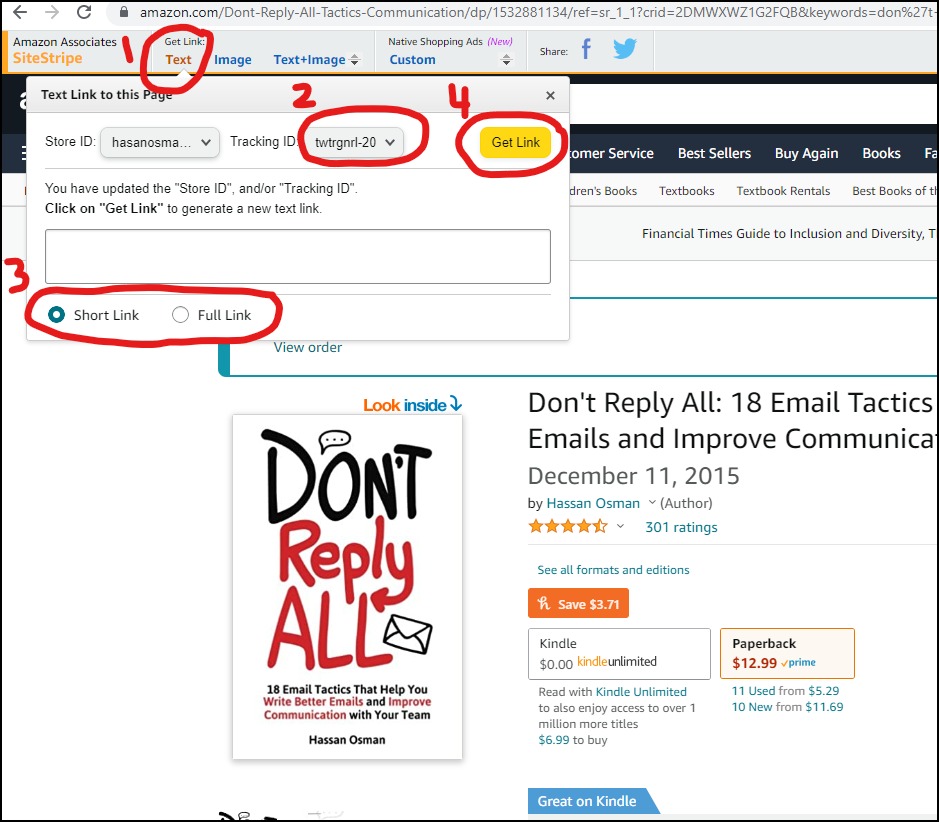
The difference between Short Link and Full Link is that the former is just a shorter version of the link that you can use when space is limited, but they both point to the same page.
In the example above, I created links to the Paperback version of my “Don’t Reply All” book using the twtgnrl-20 tracking ID.
Here’s how both links show up:
- Short link: https://amzn.to/3Lf5KSM
Notice that you can actually see the twtrgnrl-20 tracking ID in the full link URL.
I usually like to use short links as they look cleaner.
Step 5: Create other link types (optional)
Using SiteStripe, you can also create Image or Text+Image links. The tool generates HTML code that you can use on your website.
Here’s how the Image link looks like (you can choose an image size)
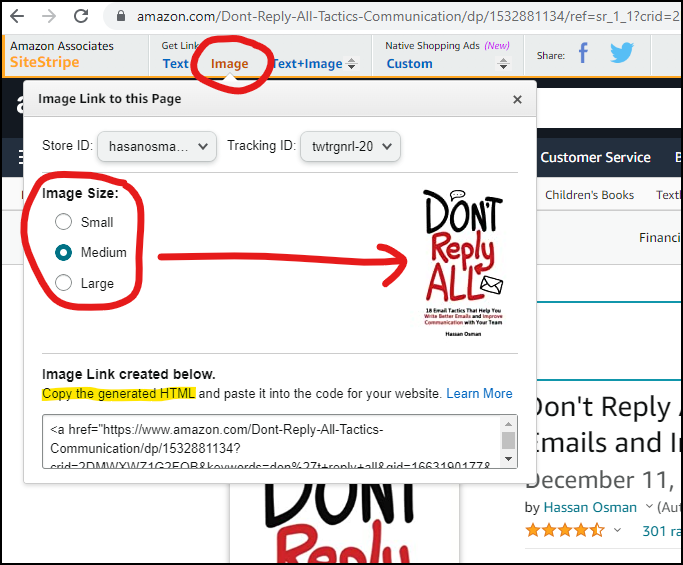
And here’s how the Text + Image link looks like
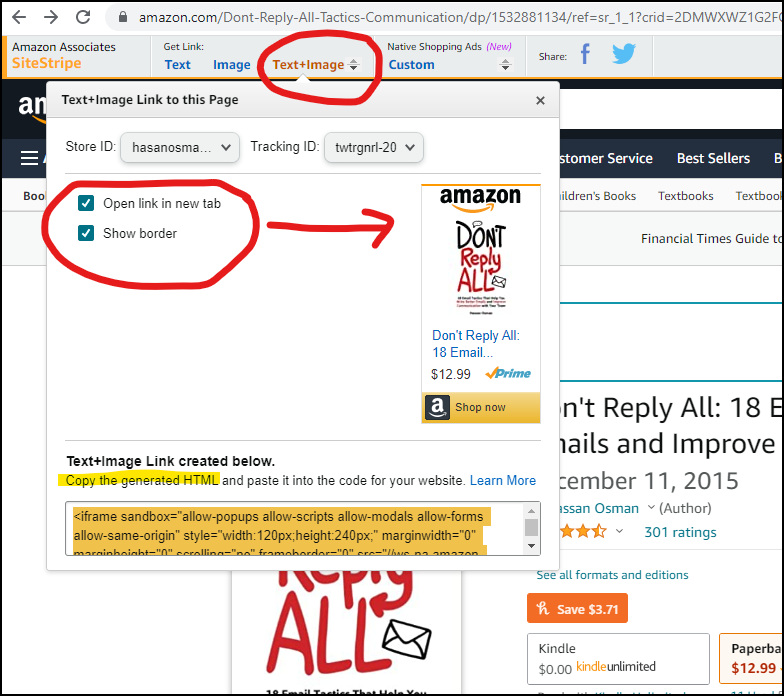
Honestly, I’ve never used either of those before because I just like to generate regular text links and include them on my own images, but they could be huge timesavers for some people.
Step 6: Include your links on your different pages
After you create your links, simply start including them on your different static pages and in your posts.
For example, the “My books” page on my website includes affiliate links to all my different books.
I also include affiliate links in my social media posts and updates. If I’m going through a launch, I can also create separate tracking IDs to monitor how specific marketing campaigns are doing.
Step 7: Track sales and collect the money
The final step is to sit back and collect the affiliate money at the end of every month. One important thing to note is that Amazon usually sends you affiliate earnings as a gift card (i.e., a claim code) in an email.
You have to redeem that gift card to get paid, so make sure you’re on the lookout for that email.
Here’s a sample of what one of those emails looks like.
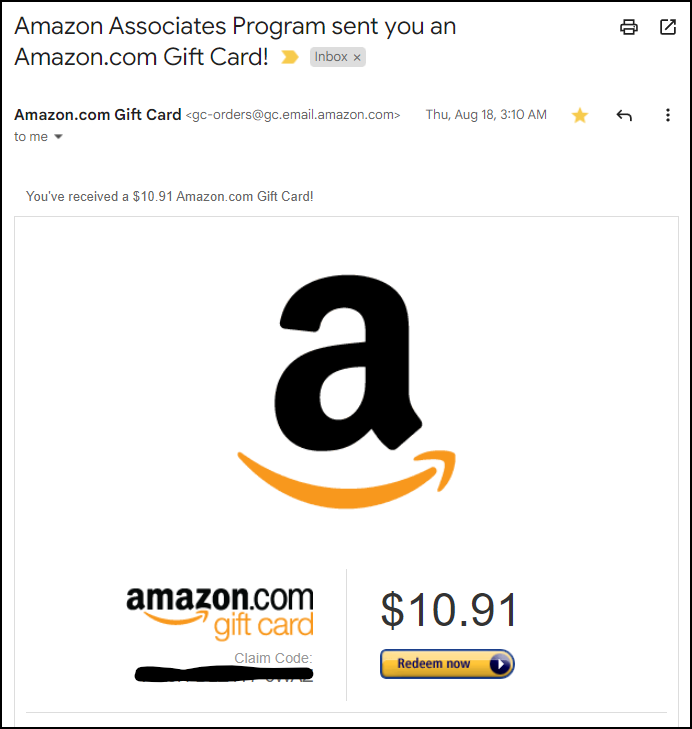
Finally, you can run reports on your Amazon Associates dashboard to monitor how your links are performing.
Simply click on “Reports” at the top, and select “Earnings Report” to see some of your data. You can also click on “Download Reports” to get an XLSX file with all the information for you to analyze.
Is the Amazon Associates Program Worth it for Authors?
Here’s a screenshot of how much money I made over the last 8 or so months in commissions and bounties.
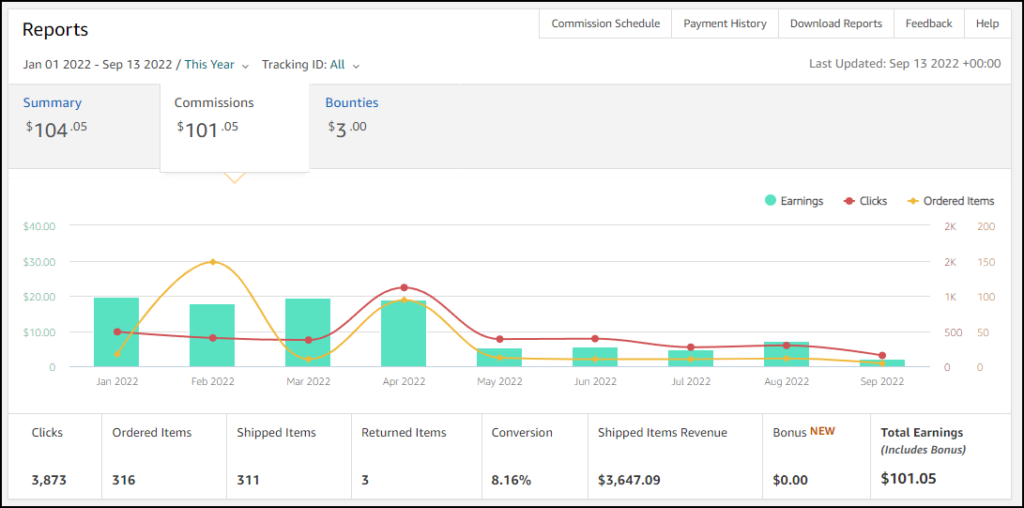
That’s a total of around $104 between January and August, or approximately $12 a month, in affiliate commissions.
So definitely not a huge money maker, but I still recommend using affiliate links because of a few reasons.
First, it’s a set-it and forget-it type deal. You’ll never have to think about those links after you create them.
Second, you might get lucky. If someone clicks on one of your affiliate links and buys an item worth $2,000, you could make $80 from that transaction alone.
Third, it helps you track and test some of your link campaigns. For example, I recently added a link to one of my books on my LinkedIn profile that hasn’t been getting a lot of click-throughs, so I’ll be changing the text link to see if that changes anything.
Finally, you can also include links to other books or products on your site. So you can help your author buddies and also make a few bucks without eating into their profits.
That’s pretty much it in a nutshell.
If you found this helpful, you might want to check out my free book about writing and publishing a book on the side (link below).